We have been very busy at our field site at Stockbridge Technology Centre near Selby, a centre for agricultural and horticultural innovation and testing.
Having installed the fruit cages last month, this month we put up 9 mesh cages, each of which will house a bee nesting block that will be kept at one of 3 temperatures (ambient, ambient + 4°C or ambient + 8°C).
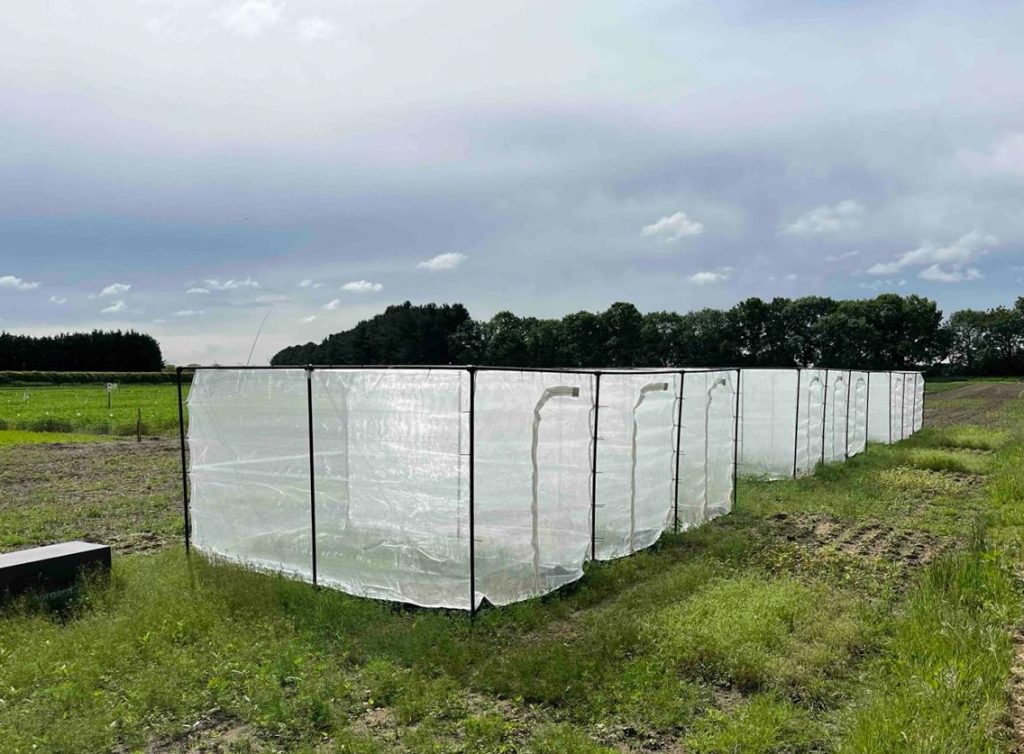
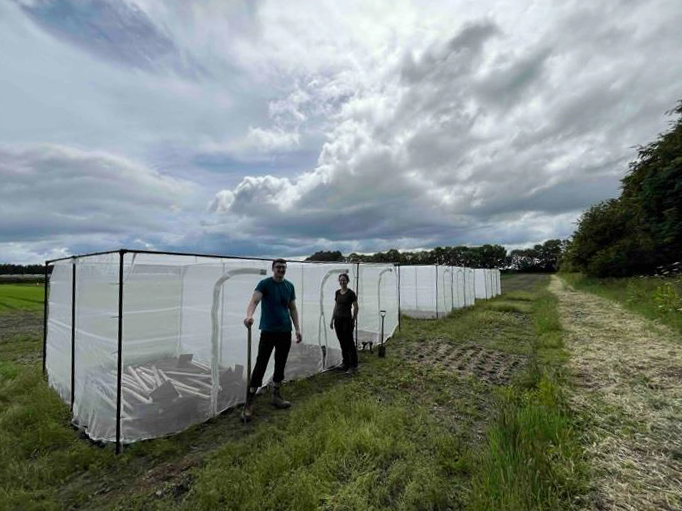
The cages had to be dug in to ensure bee-proofing – a team effort!
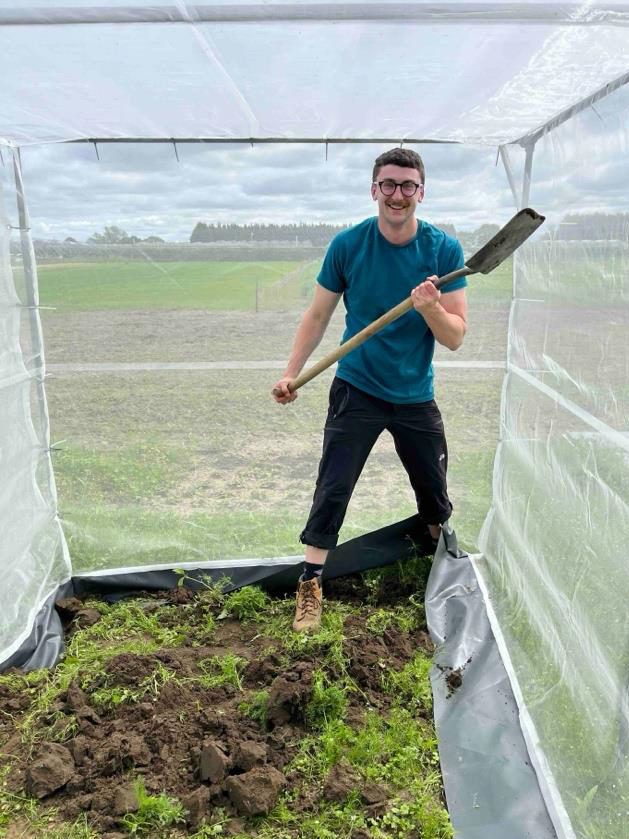
Each cage contains a rack of artificial flowers, onto each of which we load one of two artificial pollen diets onto pipe-cleaner “anthers”. The artificial pollen is a mixture of real pollen, protein, lipid and carbohydrate powders, to manipulate the nutritional choices offered to the bees, and small amounts of dyed pollen grains to help us track the amounts collected by bees. The flowers are painted with UV paint to help make them appear realistic to the bees.
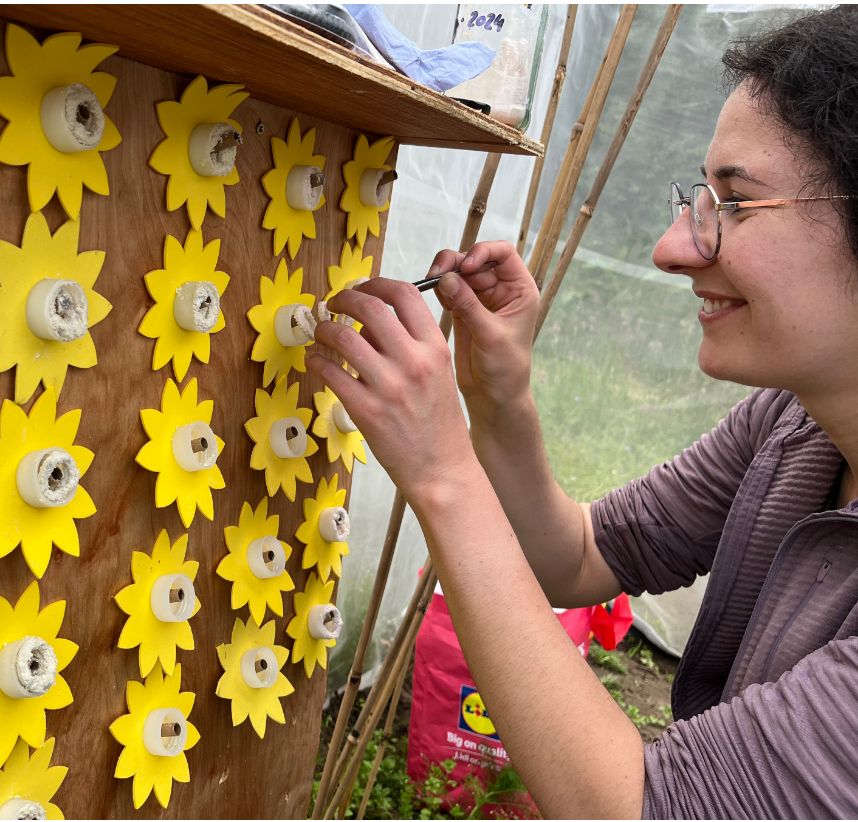
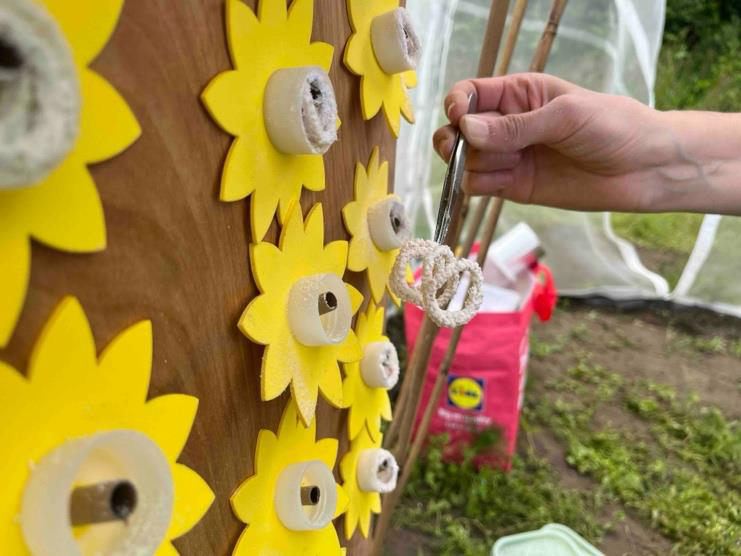
The nesting blocks are heated by reptile heat mats that are powered by an array of batteries fed by solar panels.
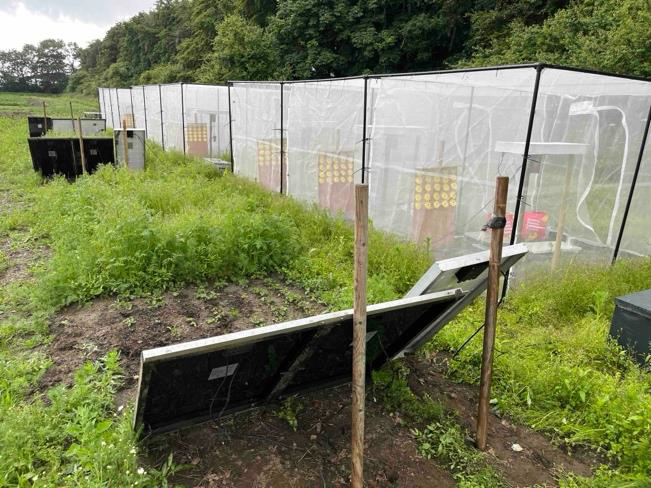
The cages are now up and ready to receive the bees – very exciting.
In case the bees choose not to breed inside the cages, we have planted an array of wildflowers outside the cages to provide pollen and nectar, so that we can remove the netting if necessary. The bees will then all have access to the same plants (those growing nearby), and we can still test our hypothesis. We will simply predict that at different temperatures they will use different species of pollen in their nesting provisions.
